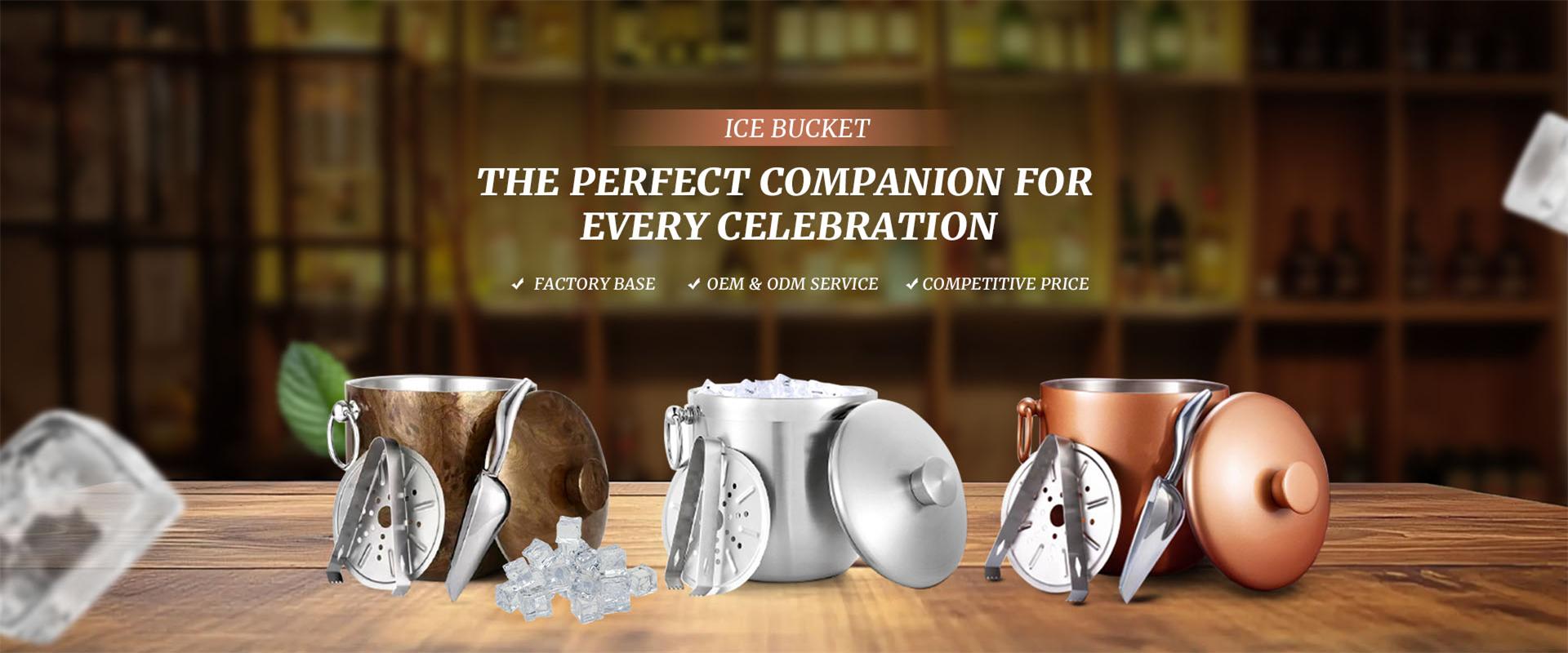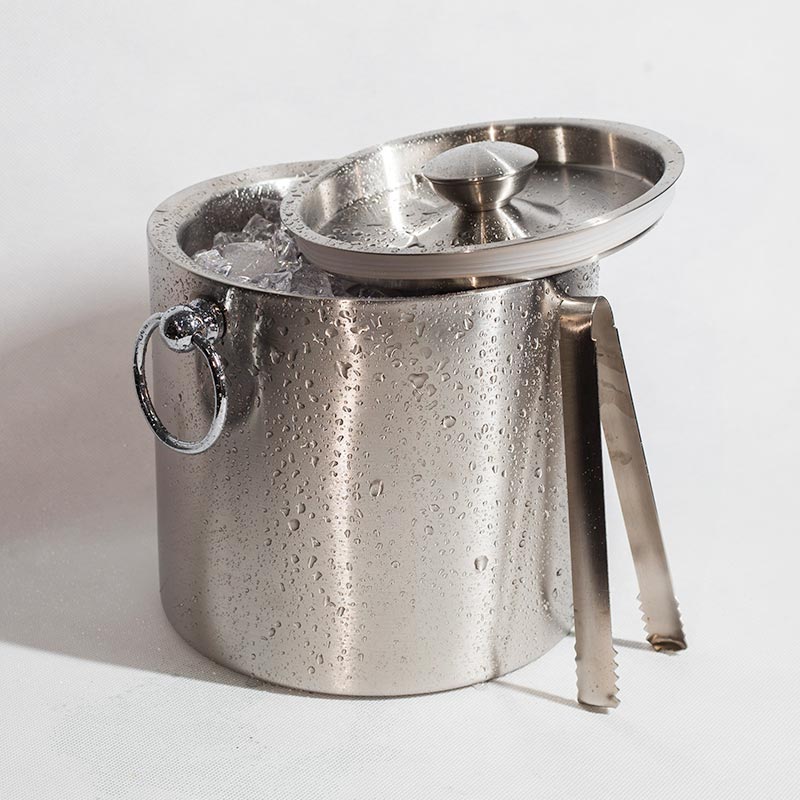How Long Does Ice Last in A Bucket
How long ice lasts in a bucket depends on a combination of temperature, insulation, and how you use the bucket. Many people assume that ice simply melts at a fixed rate, but in reality, its lifespan varies dramatically based on environment and preparation. At an indoor dinner, ice might stay solid for six hours or more, while at an outdoor event under the sun, it can vanish in less than two. The secret lies in understanding the physical properties of melting, choosing the right materials, and handling the ice correctly. Knowing how long ice can last is not only practical for parties or catering but also essential for businesses such as hotels, bars, and restaurants that rely on maintaining temperature consistency for beverages and perishable items.
1) Factors That Affect How Long Ice Lasts
The melting rate of ice in a bucket is affected by multiple interconnected factors — including the bucket’s insulation, the type of ice used, air temperature, and even the frequency of opening the lid. Each of these plays a specific role in determining how efficiently the bucket can retain cold. Understanding these elements allows you to extend the longevity of your ice supply while maintaining hygiene and presentation quality.
1. Ice Size and Type
The size of the ice pieces greatly impacts how long they can resist melting. Larger cubes or blocks of ice melt more slowly because they have a smaller surface area relative to their mass, meaning they absorb heat at a slower rate. On the other hand, crushed ice, with many exposed edges, melts quickly but offers faster cooling power. For extended use—such as in hotel service or long outdoor events—larger ice blocks or mixed cube sizes are ideal, as they balance efficiency and endurance.
| Ice Type | Average Duration in Standard Bucket | Cooling Efficiency |
|---|---|---|
| Crushed Ice | 1–2 hours | High but short-lived |
| Regular Cubes | 4–6 hours | Balanced for home use |
| Large Blocks | 8–10 hours | Long-lasting, slow melting |
| Dry Ice | 12–24 hours | Industrial-grade longevity |
2. Bucket Material and Insulation
The bucket’s material determines how much heat is transferred into the ice. A single-layer plastic or metal bucket loses cold quickly, while a double-walled or vacuum-insulated design creates a barrier that traps cold air inside and prevents condensation. Stainless steel is particularly effective because it resists external heat and maintains stable internal temperature for many hours. For professional use, such as catering or hotel room service, vacuum-insulated Ice Buckets are preferred, as they can retain solid ice for an entire day without dripping or fogging.
3. Environmental Temperature
The surrounding air temperature influences how quickly ice melts. Indoors, where temperatures are controlled, ice retains its structure much longer. Outdoors, especially under direct sunlight, radiant heat accelerates melting even in insulated containers. Wind and humidity also contribute to faster heat transfer. For example, ice kept in a shaded outdoor area at 25°C can last up to five hours, whereas in direct sunlight at 32°C, it may melt completely within two. Thus, location and placement are just as important as the bucket’s design itself.
4. Lid Usage and Handling Habits
Every time the bucket is opened, warm air enters and circulates inside, disrupting the cold equilibrium. Frequent opening not only introduces heat but also humidity, which condenses and accelerates melting. Keeping the lid closed whenever possible is essential for maximizing ice longevity. Furthermore, draining meltwater periodically helps prevent floating ice from melting faster. Professional servers often rotate fresh cubes into buckets instead of stirring or pouring warm beverages directly over the ice, a method that keeps the cooling consistent and extends usability time.
2) Average Duration Under Different Conditions
While several factors affect melting, it’s possible to estimate average durations based on practical usage environments. These estimates assume a moderate-quality insulated bucket and standard-sized ice cubes.
Indoor vs. Outdoor Conditions
Indoors, ice typically lasts the longest because temperature and humidity remain stable. In restaurants or hotels with air conditioning, a well-insulated bucket can preserve ice for up to eight hours without full melting. In contrast, outdoor settings expose ice to radiation, wind, and moisture. Even a high-quality bucket will lose ice twice as fast under direct sunlight. For outdoor gatherings, choosing shaded areas or covering the bucket with a towel can extend its effectiveness significantly.
| Environment | Temperature Range | Estimated Ice Duration | Comments |
|---|---|---|---|
| Indoor (20°C) | 68°F–72°F | 6–8 hours | Ideal for home or restaurant use |
| Outdoor Shade (27°C) | 80°F–82°F | 4–5 hours | Acceptable for events |
| Outdoor Sunlight (32°C) | 89°F–95°F | 2–3 hours | Needs frequent replacement |
| Cold Room (15°C) | 59°F | 8–10 hours | Longest lifespan possible |
Material-Specific Duration
The material and insulation level of the bucket drastically change how long the ice remains frozen. For example, a stainless-steel double-wall bucket keeps ice solid for twice as long as an acrylic one. Plastic is inexpensive and lightweight, but it offers poor insulation. If appearance and durability are both important, stainless steel or copper-plated buckets offer the best balance between form and performance.
| Bucket Material | Insulation Quality | Expected Duration | Suitability |
|---|---|---|---|
| Single-Wall Plastic | Low | 1–2 hours | Temporary, budget use |
| Acrylic / Polycarbonate | Moderate | 3–4 hours | Home or small event use |
| Double-Wall Stainless Steel | High | 6–8 hours | Professional and domestic use |
| Vacuum-Insulated Metal | Superior | 10–24 hours | Premium hotels, catering services |
Ice and Water Interaction
Another factor many overlook is whether to drain meltwater or leave it in the bucket. While water helps evenly distribute cold temperature and cool drinks faster, it also accelerates the melting of remaining ice. If your goal is to keep ice intact for as long as possible, it’s best to remove excess water periodically. A good compromise is using a drain insert or raised base, which allows melted water to collect beneath the ice without direct contact, preserving its structure longer.
Conclusion
The lifespan of ice in a bucket is not a fixed number—it’s the outcome of thoughtful preparation and environmental awareness. On average, regular ice cubes in a quality insulated bucket can last about six hours indoors, while under outdoor heat, this reduces to around three. For longer-lasting cold, use large or block ice, keep the lid closed, and choose a bucket with double-wall or vacuum insulation. Even small habits, like pre-chilling the bucket or positioning it away from sunlight, can add hours to your ice’s endurance.
Understanding these dynamics transforms ice management from guesswork into precision. Whether serving cocktails at a private gathering or maintaining chilled wine in a professional setting, a well-planned ice strategy ensures beverages stay refreshing and service remains smooth throughout the event. Longevity, after all, depends not on luck but on knowing the science—and applying it wisely.
Previous:




